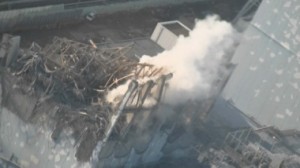Japan: Fukushima Nuclear Units 5 And 6 Continue To Heat Up – IAEA
Japan’s Nuclear and Industrial Safety Agency has reported increasing temperatures in the spent fuel ponds at Units 5 and 6 since 14 March. An emergency diesel generator at Unit 6 is now powering water injection into the ponds at those Units, according to NISA.
Spent fuel removed from a nuclear reactor is highly radioactive and generates intense heat. Nuclear plant operators typically store this material in pools of water that cool the fuel and shield the radioactivity. Water in a spent fuel pool is continuously cooled to remove heat produced by spent fuel assemblies. According to IAEA experts, a typical spent fuel pool temperature is kept below 25 °C under normal operating conditions. The temperature of a spent fuel pool is maintained by constant cooling, which requires a constant power source.
Given the intense heat and radiation that spent fuel assemblies can generate, spent fuel pools must be constantly checked for water level and temperature. If fuel is no longer covered by water or temperatures reach a boiling point, fuel can become exposed and create a risk of radioactive release.

The concern about the spent fuel pools at Fukushima Daiichi is that sources of power to cool the pools have been compromised.
Concern about spent fuel storage conditions has led Japanese officials to drop and spray water from helicopters and trucks onto Unit 3 at Fukushima Daiichi nuclear power plant.
The IAEA said it can confirm the following new information regarding the temperatures of the spent nuclear fuel pools at Units 4, 5 and 6 at Fukushima Daiichi nuclear power plant:
Unit 4
13 March, 19:08 UTC: 84 °C
Unit 5
17 March, 03:00 UTC: 64.2 °C
17 March, 18:00 UTC: 65.5 °C
Unit 6
17 March, 03:00 UTC: 62.5 °C
17 March, 18:00 UTC: 62.0 °C
